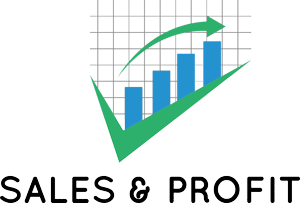Sales Pipeline Velocity Calculator
Optimize your sales process with this real-time calculator.
$0
Sales VelocityAre you trying to figure out how fast your sales are moving? Do you want to know if your sales process is working well?
If yes, then you’re in the right place.
Let’s talk about something called sales pipeline velocity.
This is a key measure that helps you see how quickly deals move through your sales pipeline.
Understanding this can change the way you approach sales.
Why should you care about measuring sales velocity?
Because it gives you insights into your business.
- It helps you understand:
- How many deals you have in the pipeline
- The average size of those deals
- Your win rate
- How long it takes to close a deal
When you know these things, you can make better decisions. You can spot problems early and improve your sales strategy.
With a Sales Pipeline Velocity Calculator, you can easily crunch these numbers.
This tool makes it simple to see where you stand and what needs fixing.
What is Sales Velocity?
In simple terms, it’s a measure of how quickly deals move through your sales pipeline.
Sales velocity shows the efficiency of your sales process.
It combines several key factors to give you a clear picture.
The faster your sales velocity, the quicker you can close deals and generate revenue.
Key Metrics Involved in Calculating Sales Velocity?
To understand sales velocity, we need to break it down into four main components:
- Number of Sales Opportunities: This is how many potential deals are in your pipeline at any given time. More opportunities usually mean more chances to close sales.
- Average Deal Value (ACV): This is the average revenue you expect from each deal. Larger deals can significantly impact your overall sales velocity.
- Win Rate: This is the percentage of deals that you successfully close. A higher win rate means you’re converting more opportunities into actual sales.
- Length of Sales Cycle: This measures how long it takes to close a deal from start to finish. Shorter cycles generally lead to faster revenue generation.
How to Calculate Sales Velocity
Now that we understand what sales velocity is, let’s dive into the formula that calculates it.
This formula helps you see how all the key metrics work together.
Sales Velocity Formula :

Example of Calculating Sales Velocity
1. Number of Opportunities (O) – For example, if you have 100 leads, that’s your number of opportunities.
2. Average Deal Value (V) – If your total revenue from 10 closed deals is $500,000, then your average deal value is – 500000 / 10 = 50,000
2. Win Rate (R) – If you closed 20 out of 100 opportunities, your win rate would be 20 / 100 = 0.20 or 20%
2. Length of Sales Cycle (L) – If it takes an average of 30 days to close a deal, then that’s your length of sales cycle.
So now you have the following values :
- Number of Opportunities (O): 100
- Average Deal Value (V): $50,000
- Win Rate (R): 20% or 0.20
- Length of Sales Cycle (L): 30 days
Calculating Sales Velocity using the formula :

So your sales velocity would be approximately $33,333.33.
Benefits of Calculating Sales Pipeline Velocity
Calculating your sales pipeline velocity is not just about numbers.
It’s about understanding your sales process and improving it.
Here are several key benefits of measuring sales velocity that can help you drive better results.
1. Identify Sales Bottlenecks
One of the biggest advantages of calculating sales velocity is that it helps you spot bottlenecks in your sales process.
If your sales cycle is longer than expected, it may indicate issues.
By analyzing your velocity, you can pinpoint where deals get stuck.
This allows you to take action and streamline your process.
Identifying and solving your sales bottlenecks is necessary to build a strong sales process and grow your revenue.
Through our B2B Sales Consulting services, we help mid to large organizations identify their 20% of most pressing sales bottlenecks.
And assist them in solving it which further positively impacts their sales metrics and revenue growth.
2. Improve Sales Forecasting
Sales velocity provides valuable insights for forecasting future revenue.
When you know how quickly deals are closing, you can predict cash flow more accurately.
This helps in planning and resource allocation.
You’ll be able to set realistic sales targets based on historical data.
3. Optimize Sales Strategies
Understanding your sales velocity allows you to refine your strategies.
You can see which aspects of your sales process are working and which aren’t.
This leads to better decision-making regarding training, tools, and tactics.
You can focus on what drives the most revenue.
4. Enhance Sales Team's Performance
When you track sales velocity, you can assess team performance more effectively.
You can identify top performers and understand what they do differently.
This knowledge can be shared across the team to elevate overall performance.
Specific sales training programs can be tailored based on specific areas needing improvement.
Or a sales training company like Sales & Profit can help you enable the sales team through customize programs based on your team’s performance.
5. Better Lead Qualification
By analyzing pipeline velocity, you can improve lead qualification processes by tracking back which channels gave you the best leads that moved quickly through the sales pipeline.
You’ll able to shortlist sources yield the best opportunities and win rates.
This allows you to focus on right channels for high-quality leads that convert more easily.
We have covered how to identify the best sources of leads / opportunities in the next section
Analyzing Opportunity Sources with Sales Pipeline Velocity
Understanding where your sales opportunities come from is crucial.
Different sources yield varying levels of success.
By analyzing these sources through the lens of sales pipeline velocity, you can make informed decisions about where to focus your efforts.
Why Analyze Opportunity Sources?
- Analyzing opportunity sources helps you:
- Identifying which channels are most effective.
- To Allocate resources wisely.
- To Improve lead generation strategies.
- At last, to maximize revenue potential.
| Pipeline Source | Qualified Opportunities | Average Deal Value ($) | Sales Cycle Length (Days) | Win Rate (%) | Sales Velocity ($) |
|---|---|---|---|---|---|
| Cold Outreach | 600 | 64,000 | 94 | 4 | 16,340.43 |
| Referral | 40 | 100,000 | 25 | 31 | 49,600.00 |
| Inbound | 400 | 50,000 | 50 | 12 | 48,000.00 |
| Social Media | 350 | 30,000 | 30 | 15 | 52,500.00 |
| Webinars | 200 | 45,000 | 20 | 20 | 90,000.00 |
| Events | 150 | 70,000 | 45 | 10 | 23,333.33 |
| Paid Advertising | 250 | 55,000 | 35 | 18 | 42,500.00 |
| Email Campaigns | 300 | 40,000 | 60 | 8 | 16,000.00 |
Insights from the calculations above:
- Webinars have the highest sales velocity, indicating that they are a powerful source for generating revenue quickly.
- Referrals also show strong performance, with a high win rate and a relatively short sales cycle.
- On the other hand, sources like cold outreach and email campaigns have lower velocities and may require reevaluation.
- Social media and paid advertising show promise but need further optimization to increase conversion rates.
Key Stats Related to Sales Velocity
- The average sales velocity for B2B companies is approximately $583 per day.
- 40% of sales teams face long onboarding periods, which results in deal velocity coming down.
- Rain Group surveyed 472 sellers and sales executives representing companies with salesforces ranging in size from 10 sellers to 5,000+, and they found average sales win rate was around 47%

